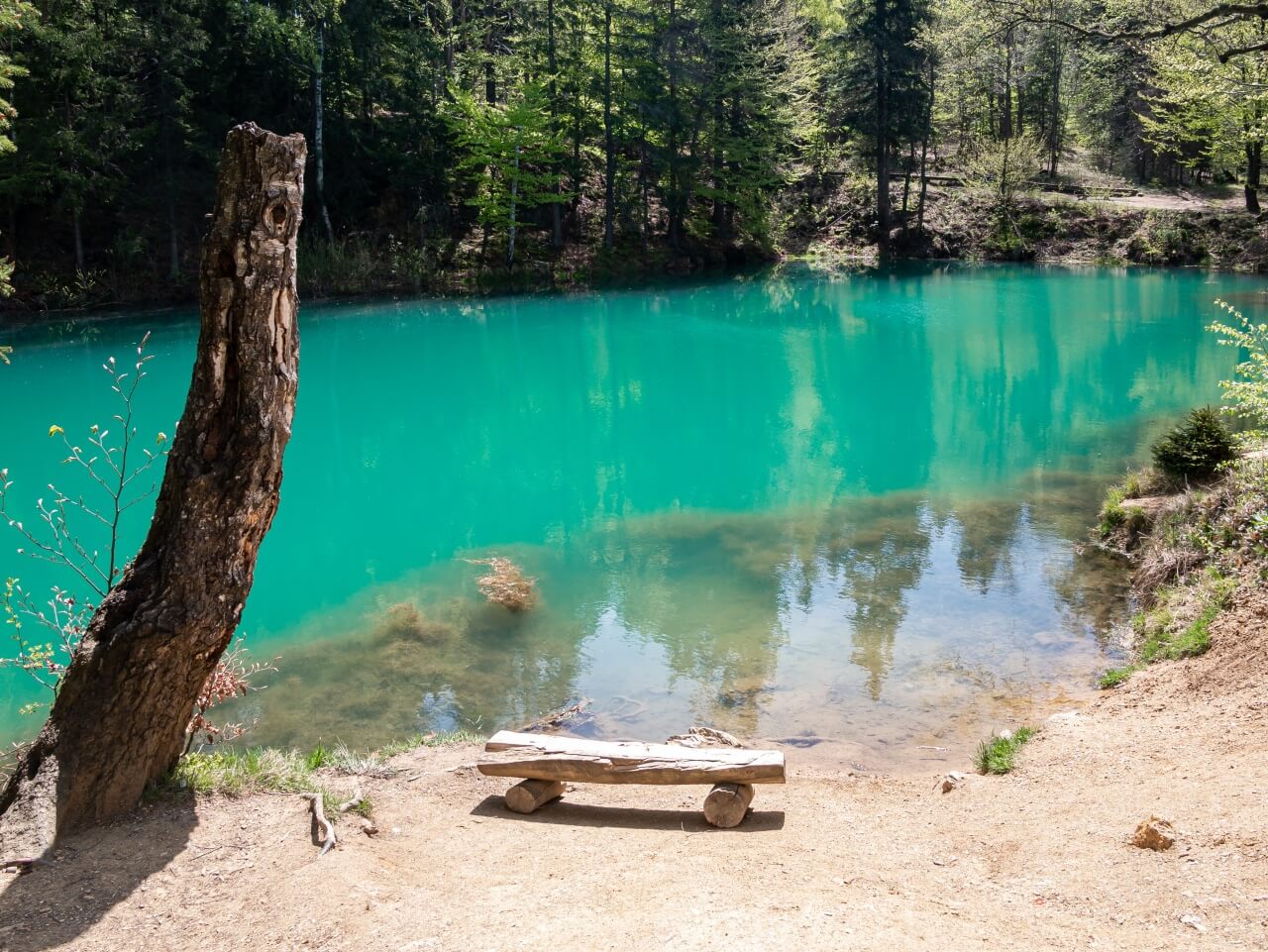
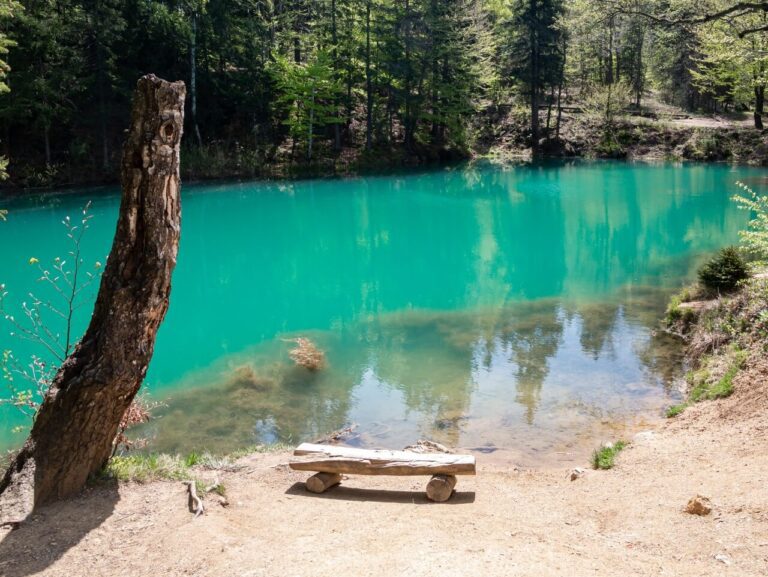
Lower Silesia is one of the richest regions in Poland regarding tourist attractions. Even though I have lived here since birth, I still have not discovered all the exciting places the area hides. Various cities, mountain ranges, lakes, dozens of castles, fortresses and palaces are waiting to be explored, and even… volcanoes and vineyards! There is also plenty of underground attractions, charming corners in nature and trails for long hikes.
I have prepared a list of 21 interesting places to see, things to do & attractions worth seeing in Lower Silesia (Dolny Śląsk). It will help you in planning one-day, weekend and longer trips in this area of Poland.
LOWER SILESIA IS A REGION FULL OF GEMS
Looking for exciting places to see in the region of Lower Silesia? Want to explore Poland’s most beautiful region?
Get a map of 110 attractions in Lower Silesia. Works on phone & computer (Google Maps).
Wroclaw is the largest city and capital of Lower Silesia. It is the centre of cultural life in this part of Poland and is alive at any time of day or night. Many attractions are reminders of the city’s pre-war history, but many also symbolize the modernity and multiculturalism of Wroclaw.
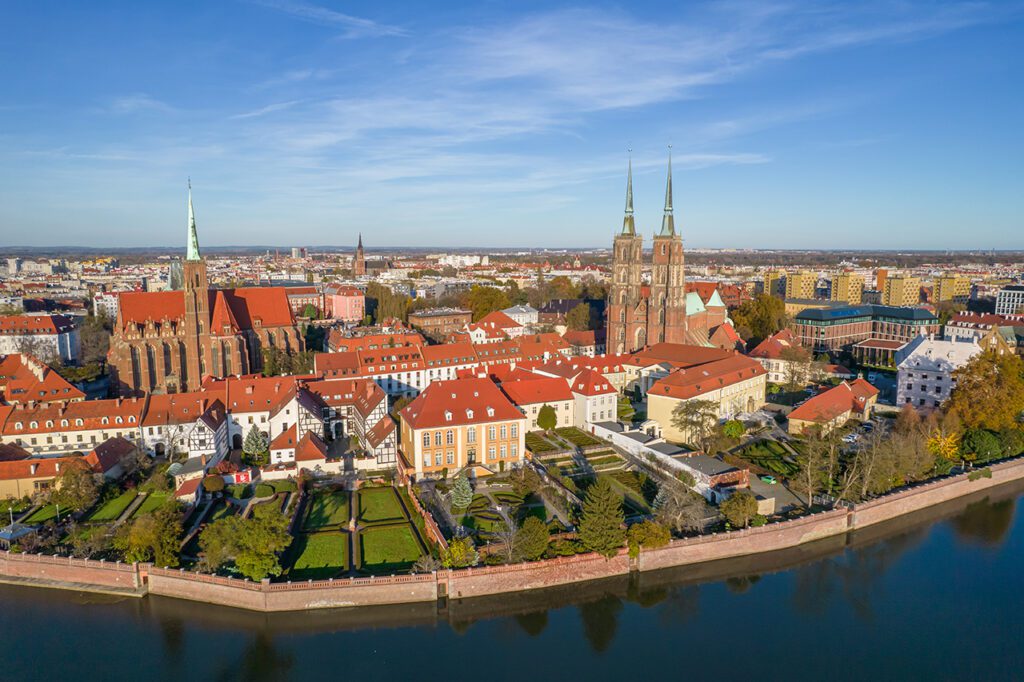
I have lived in the city for almost more than 10 years and still manage to discover new nooks and crannies. Plan at least 2-3 days to explore Wrocław, but if you only have a day to spare, focus on the city’s most important attractions.
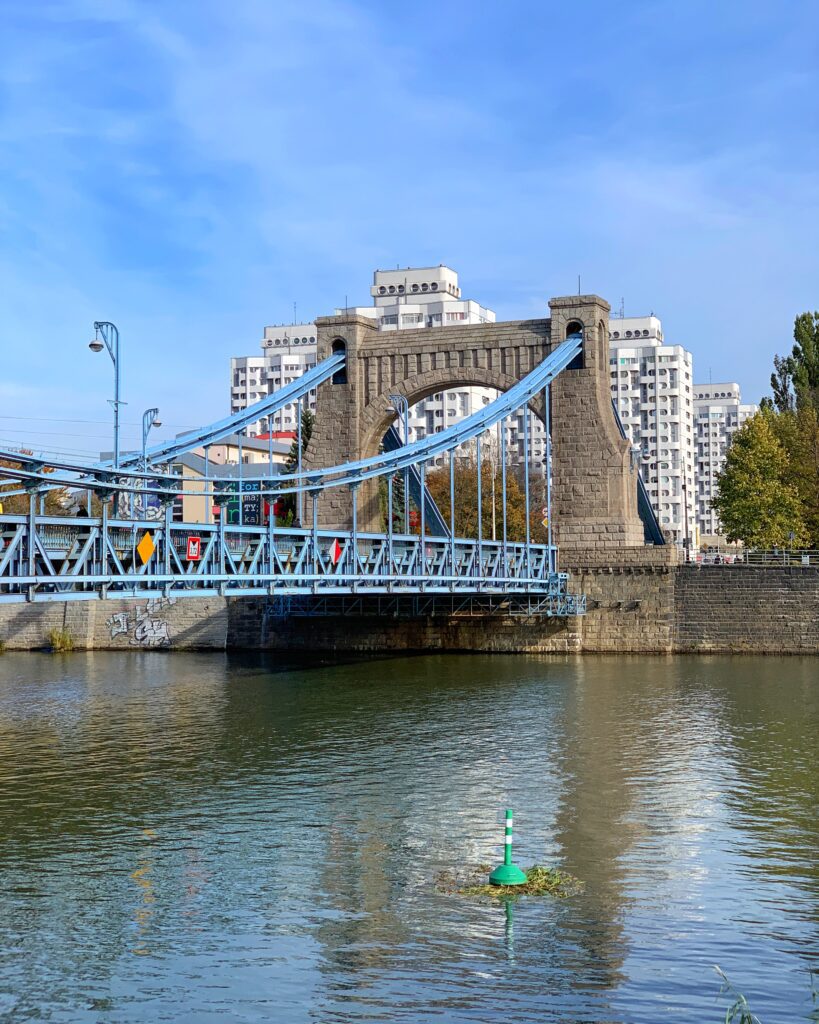
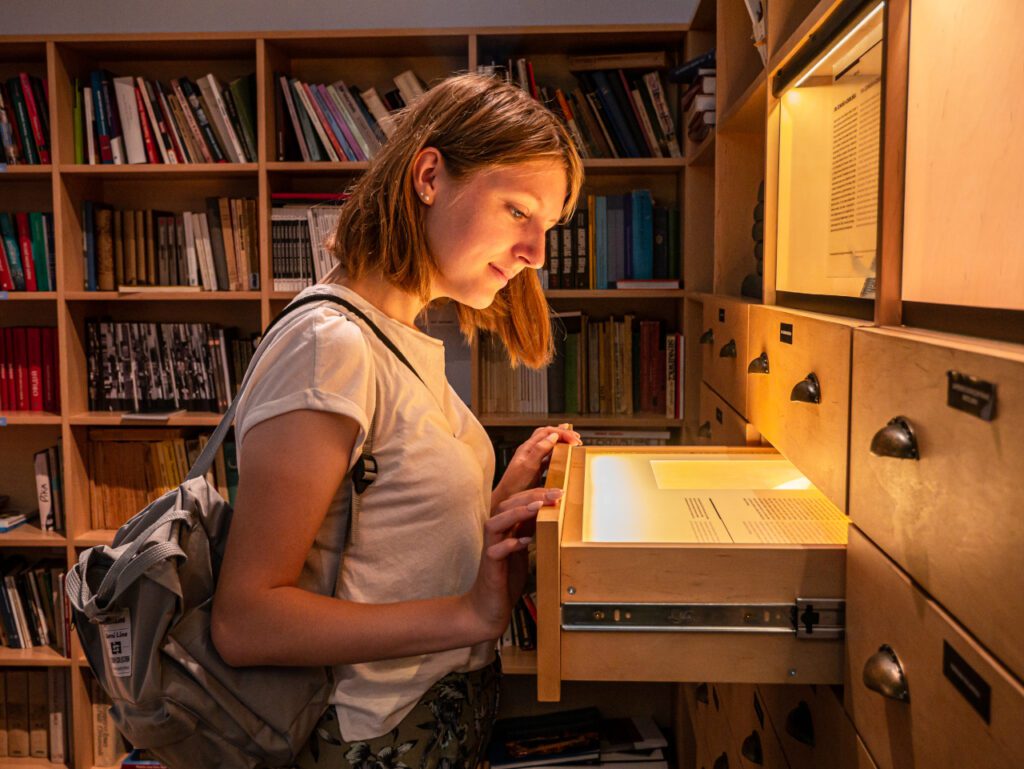
Check the UNESCO World Heritage-listed Centennial Hall (Hala Stulecia) surrounded by the beautiful Pergola, the colourful Old Town Square (Rynek Starego Miasta), the monument-packed Ostrów Tumski and Poland’s tallest building, the Sky Tower. If you like to see cities from above, you can choose from 5 official viewpoints in Wroclaw.

Looking for accommodation in Wrocław? Check my list of recommended hotels and apartments in Wrocław. The closer to the Market Square you stay, the more comfortable you will be when visiting Wroclaw.
While exploring, look around for Wrocław’s dwarves (krasnale). Tourists are attracted to the Wroclaw Zoo – the oldest zoo in Poland. The Wroclaw Zoo has an “Afrykarium” with a massive aquarium with a long tunnel through it. The city also has plenty of less famous, exciting places to see – such as the WuWa model housing estate, built in Wroclaw in the 1920s.
Get ready for travel to Poland & Lower Silesia
1. Accommodation: book early & save money (stay in Wrocław, Jelenia Góra & Szklarska Poręba).
2. Currency exchange: you can use your bank card, but much cheaper is the free Curve card.
3. Rent a car in Wrocław: you’ll be flexible & see more in less time.
4. Map of Dolny Śląsk’s sights: explore with a map of the best attractions on your phone.
Swidnica is one of the most beautiful cities in Lower Silesia, right after Wroclaw (on my subjective scale). It is a must-see destination for a day trip, during which you will have the opportunity to get to know the main attractions of this city.
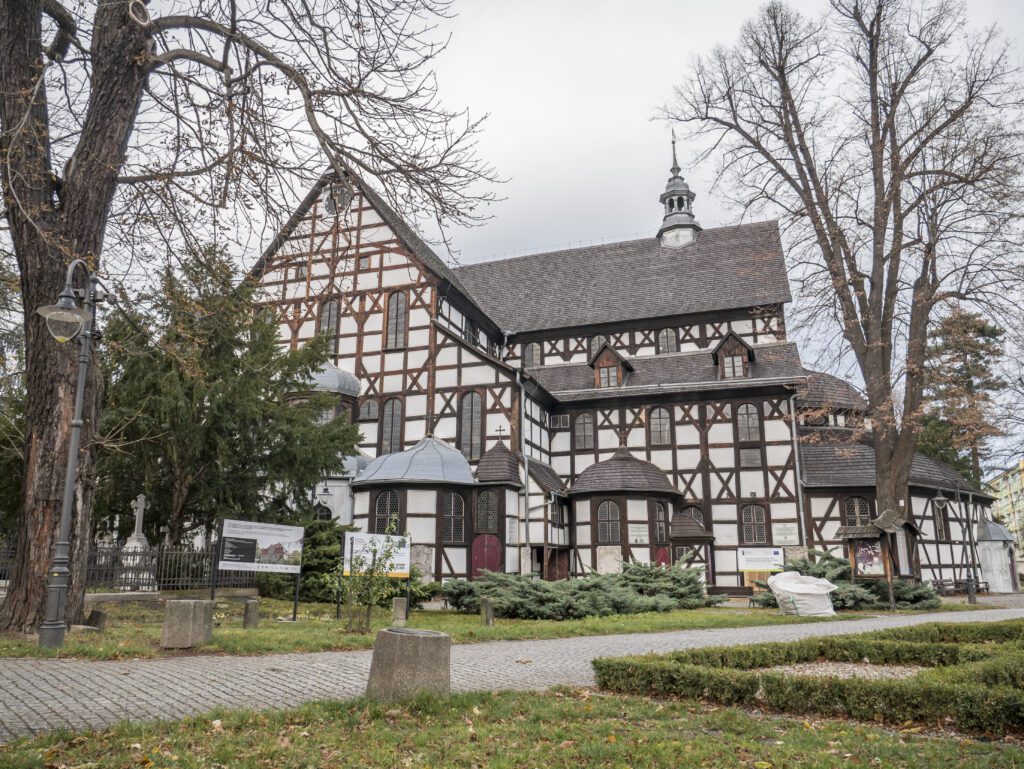
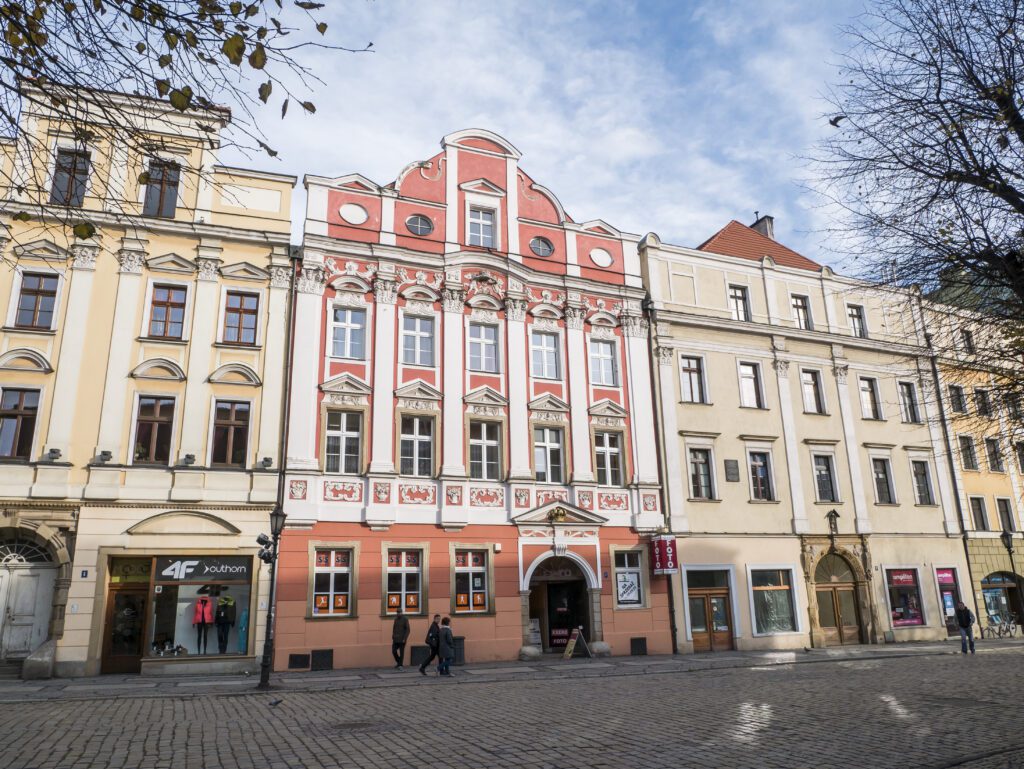

Swidnica is also recognized among foreign tourists thanks to its UNESCO World Heritage Site, the wooden Church of Peace (Kościół Pokoju). The monument is unique, and I suggest you start your tour of the city with it. However, there are other attractions in Swidnica.
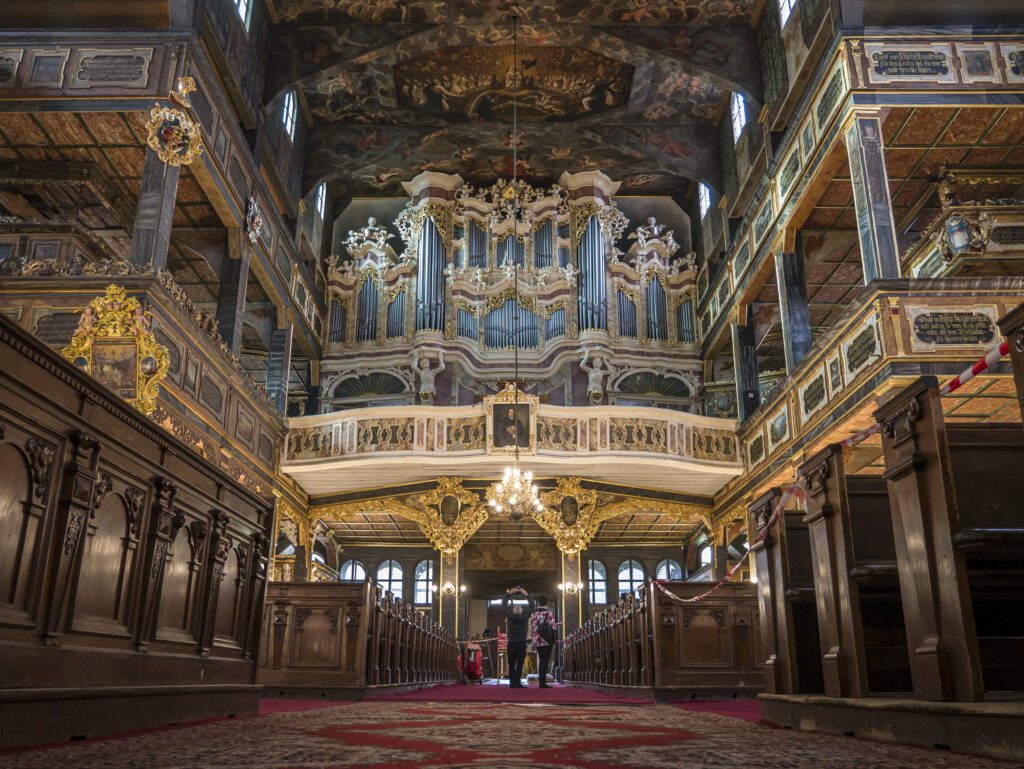
You should see the Cathedral of St. Stanislaus and St. Wenceslaus (Katedra św. Stanisława i św. Wacława), with the tallest church tower in Lower Silesia measuring 101.5 meters, the Market Square (Rynek) with its historic townhouses and the Museum of Ancient Merchants (Muzeum Dawnego Kupiectwa). Remember to climb the City Hall tower to get a good view of the entire city and its surroundings.
Jelenia Góra is the fourth largest city in Lower Silesia, at the foot of the Karkonosze Mountains. It is worth a stop here on the way to Szklarska Poręba or Karpacz to see the Market Square (Rynek) and enjoy the services of the Cieplice Thermal Baths (Termy Cieplickie) in Cieplice – a spa district of Jelenia Góra.

At the foot of the Sobieszów district is Chojnik Castle, picturesquely located on top of Chojnik Mountain. Before entering the castle, read the legend about the cruel princess Kunegunda, who was said to inhabit this fortress.
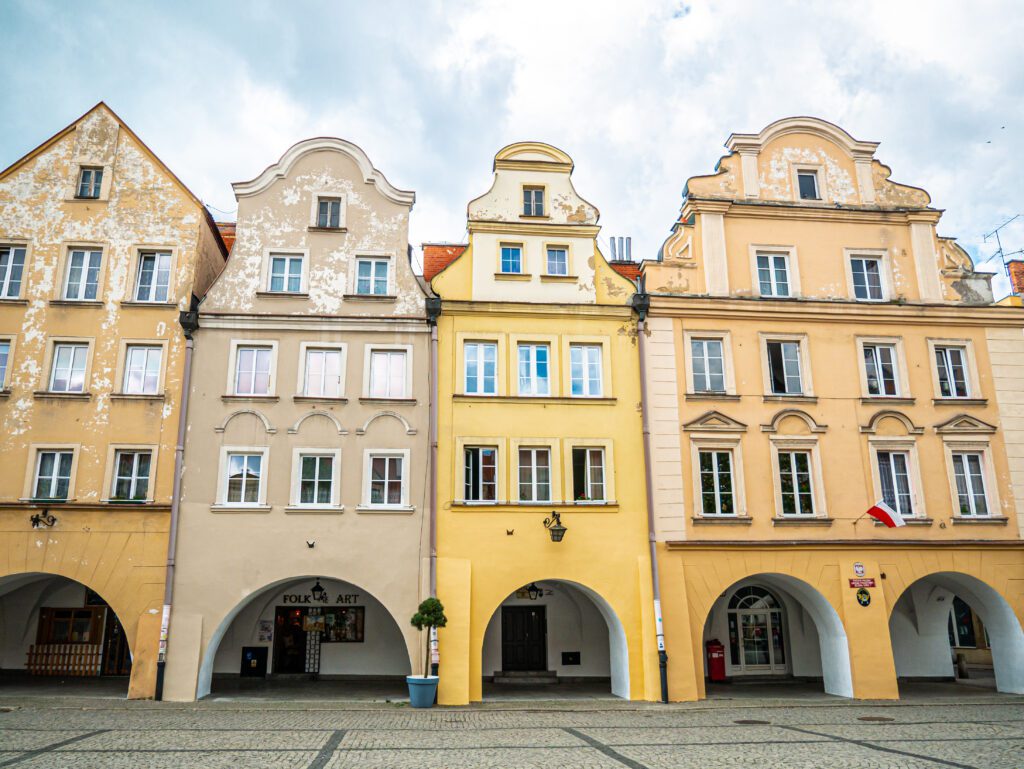

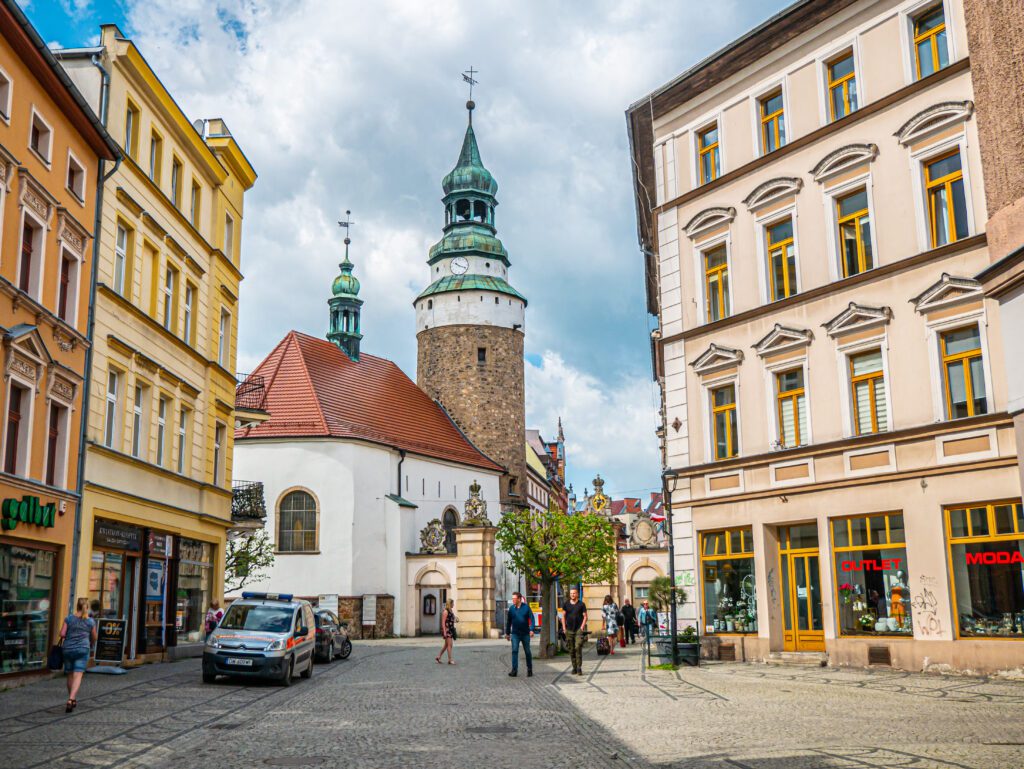
Jelenia Gora is a good base for excursions to the Karkonosze Mountains, the Izera Mountains and the Beaver Valley Landscape Park (Park Krajobrazowy Doliny Bobru) with its massive dam on Lake Pilchowice (Jezioro Pilchowickie). The Jelenia Góra area is also the Valley of Palaces and Gardens (Dolina Pałaców i Ogrodów) of the Jelenia Góra Valley, with more than 30 beautiful buildings.
Looking for hotels & apartments in Jelenia Góra? Check available accommodation in Jelenia Góra (look for places close to the Market Square and the Jelenia Góra railway station).
Bolesławiec is inseparably associated with ceramics. Around the 18th century, the first entirely original style of Bolesławiec stoneware was developed, and over the years, it gained popularity throughout Europe and beyond. Today, ceramics are the main magnet for tourists to the city – although there are others!
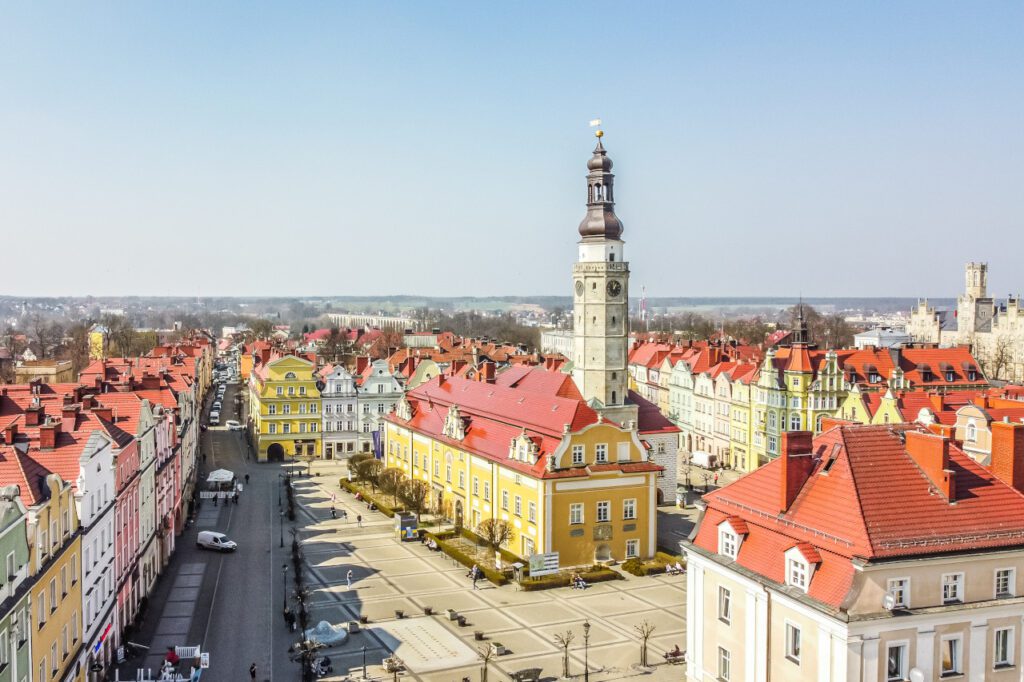
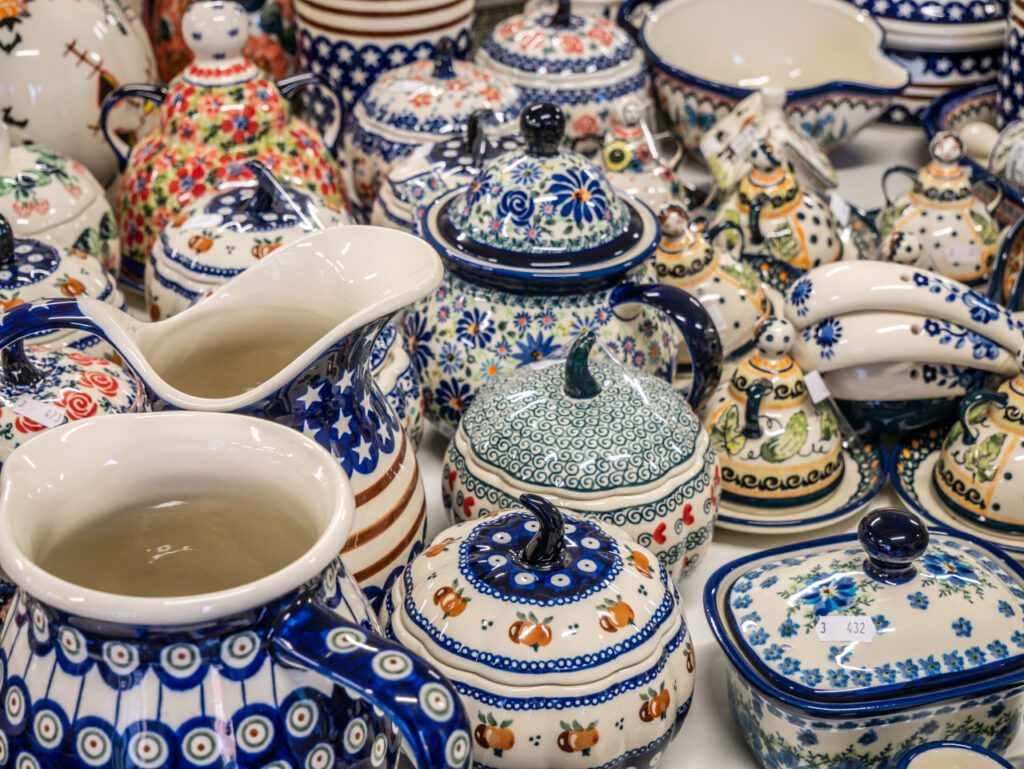

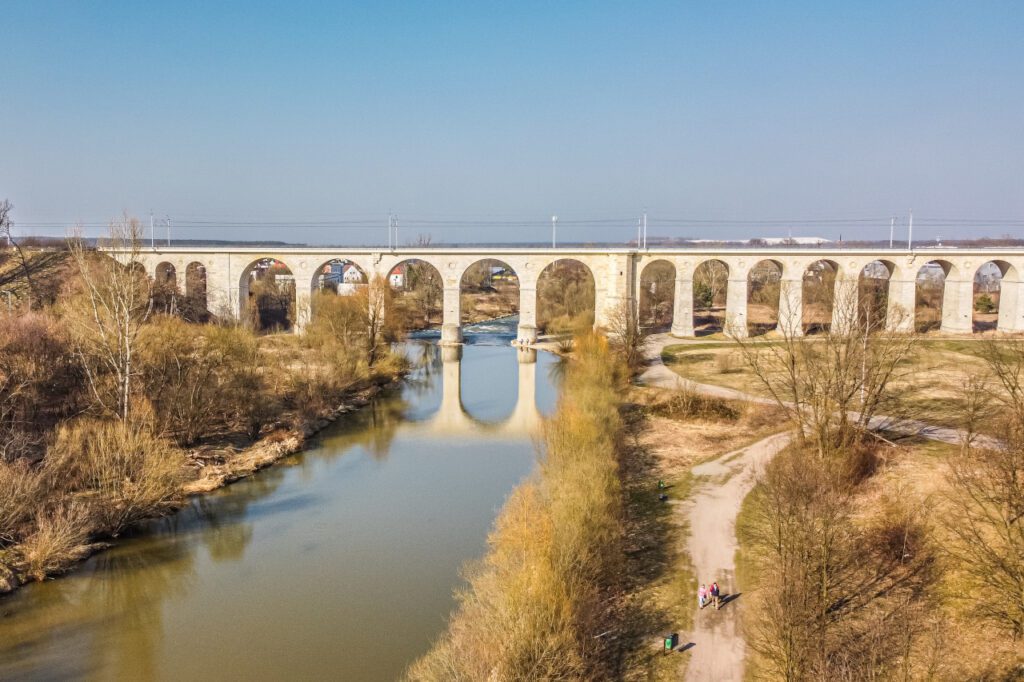
As part of your tour of Bolesławiec, I recommend you see the pretty Market Square (Rynek) with the Town Hall (Ratusz) and the Basilica of Mary (Bazylika Maryjna), surrounded by colourful townhouses with restaurants and cafes. Be sure to check out the Museum of Ceramics (Muzeum Ceramiki), walk along the city walls and see the massive railroad viaduct on the Bóbr River resembling an aqueduct.
If you want to extend your stay in Bolesławiec, take an interest in the former southern district, see the Old Theater and the District Court building, and sign up for a ceramics workshop at the Living Ceramics Museum (Żywe Muzeum Ceramiki).
Spend a few weekends getting to know the Karkonosze – the highest mountain range of the Sudety Mountains located in Lower Silesia. From Karpacz, you can embark on a several-hour trek to the highest peak of Karkonosze – Śnieżka. Szklarska Poreba is the starting point for a trip to another Karkonosze peak – Szrenica.
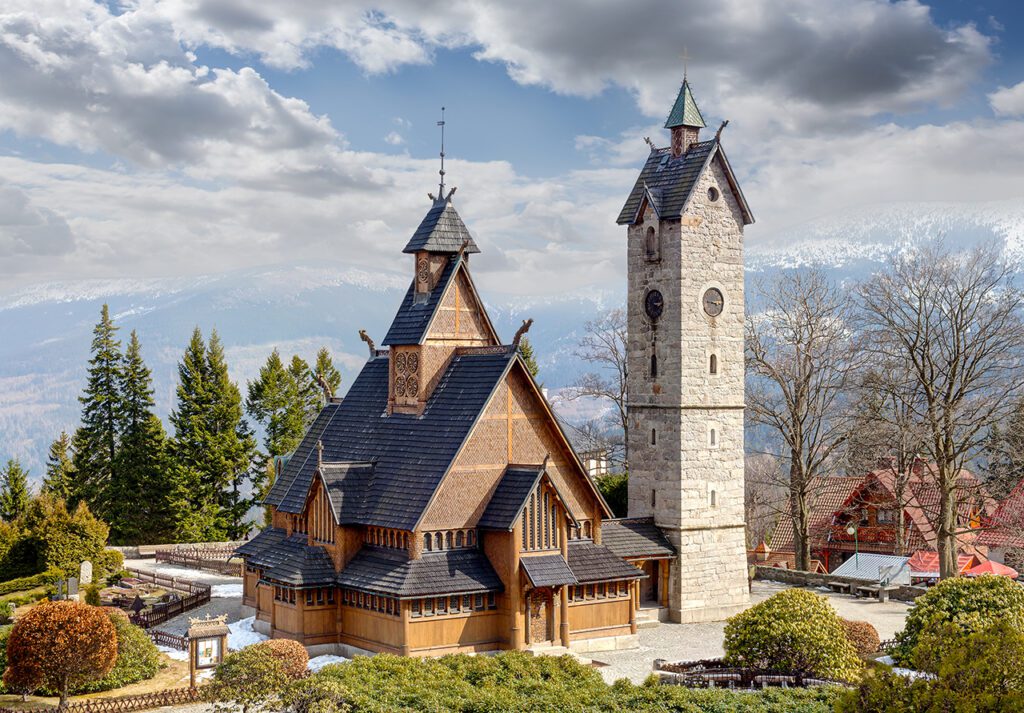
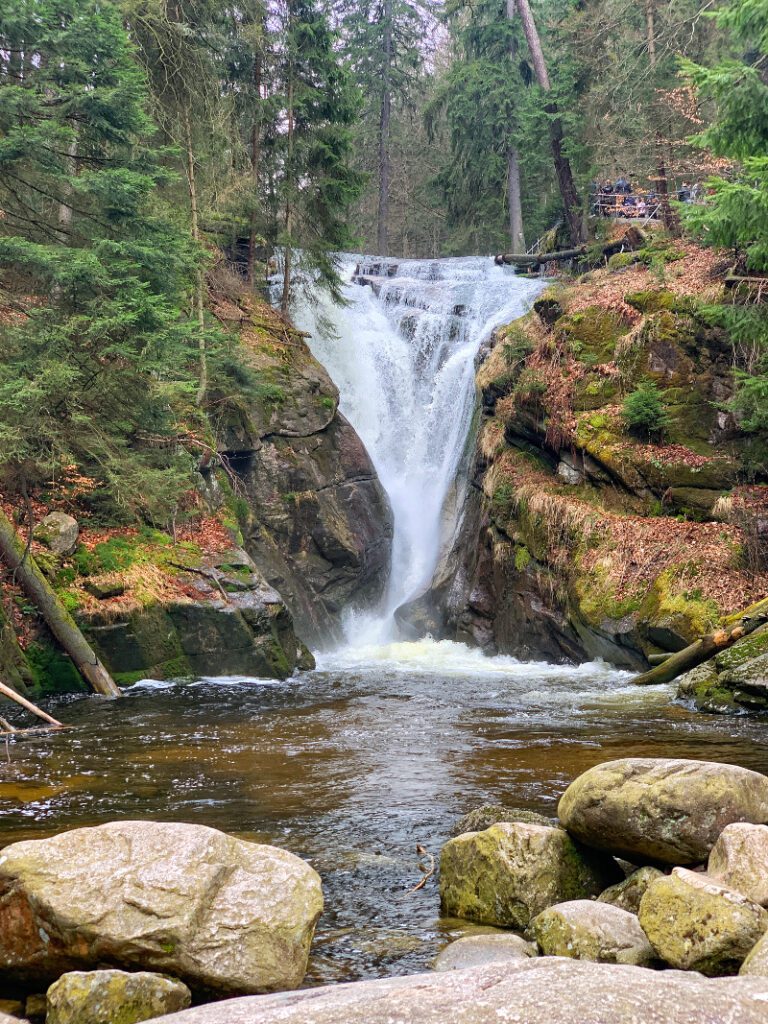

If you like longer hikes in the mountains, I recommend hiking from Śnieżka to Szrenica and staying overnight at the Szrenicka Hall shelter (schronisko na Hali Szrenickiej). A trip to Karkonosze is an option for an active weekend in Lower Silesia. In Karkonosze, you will find exciting agritourism where you can rest after mountain hiking.

Among the places worth seeing in Szklarska Poreba are the Kamieńczyk Waterfall and Szklarka Waterfall, the Old Walloon Cottage (Stara Chata Walońska), a reminder of the history of the Walloons, the Chybotek Rock, which you can move with just one hand and some viewpoints – such as the Golden View (Złoty Widok) and Death Bend (Zakręt Śmierci).
When visiting Karpacz’s attractions, see the Wang Temple (Świątynia Wang), transferred from the Norwegian town of Vang, the dam on the Łomnica River built to protect Karpacz from flooding, the Orlinek ski jump and the Krucze Skały with a beautiful view of the Karkonosze Mountains.
Srebrna Góra Fortress is a never-conquered, 18th-century fortress in the Owl Mountains (Góry Sowie). It is Europe’s largest mountain fortress, surrounded by one of Poland’s most mysterious mountain ranges.
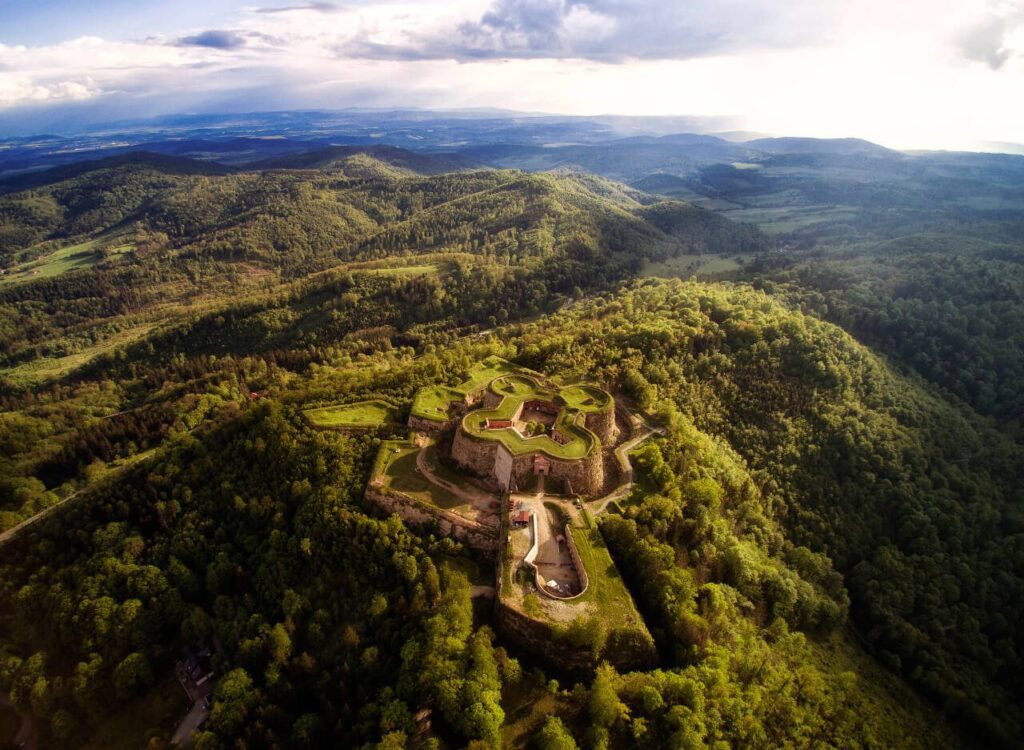
It consists of 6 forts located in different parts of Srebrna Gora. The most distinctive part of the fortress is a bastion complex with a characteristic high donjon. The tour is led by guides dressed in historical costumes, who will try to teach tourists military drills.
For details of the Srebrna Góra Fortress tour, visit the website. There are no trains to get here at all and no bus service on weekends. The most convenient way to get here is by car or hitchhiking from Ząbkowice Śląskie.

In Srebrna Góra, you can also find the remains of a cog railroad – the only one of its kind in Poland. Trains here had to traverse such a steep section of track (as much as 6% gradient) that cog rail was installed on parts of the route.
From Srebrna Góra, you can take a full-day hike to Walim, passing Kalenica Peak and the PTTK Zygmuntówka mountain shelter. You will also be able to climb the Great Owl (Wielka Sowa) – the highest peak of Góry Sowie (Owl Mountains).
BEST PLACES TO SEE IN LOWER SILESIA ON YOUR PHONE
Looking for exciting places to see in Lower Silesia? Want to save time on planning?
Get a map of 110 attractions in Lower Silesia. Works on your phone & computer (Google Maps).
Książ Castle is the largest castle in Lower Silesia and the third largest castle in Poland (after Malbork and Wawel). It was supposed to be one of Adolf Hitler’s quarters during World War II. You can visit the above-ground part of the castle with its beautiful chambers and the underground, which was hollowed out during the war.
A visit to the Książ Castle complex – along with the Palm House and Książ Landscape Park – takes a full day. You can get here by car or city bus from the Walbrzych Miasto train station (check the schedule at jak-dojade.pl).

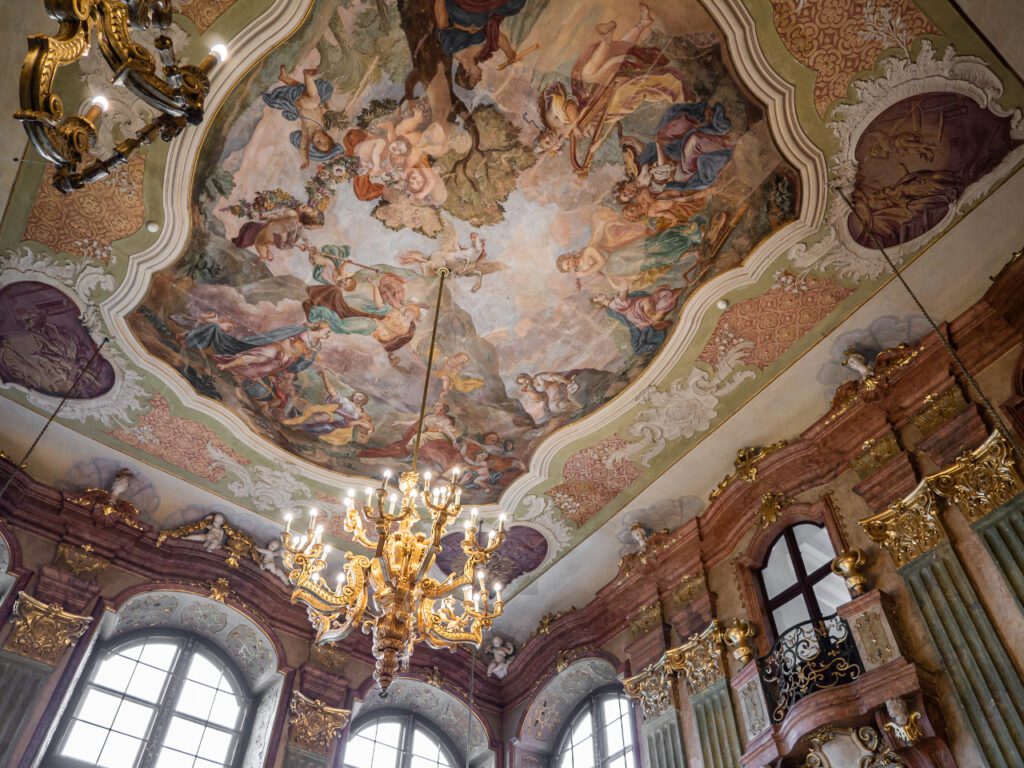
There are several mysterious stories associated with Książ Castle. The underground of Książ castle could have been a shelter, a depository for valuable documents, or even a military factory where work on the Nazi atomic bomb was to be carried out.
While visiting Walbrzych, check out the Old Mine (Stara Kopalnia) and Porcelain Museum (Muzeum Porcelany) and take a trip to the surrounding Stone Mountains (Góry Kamienne) and Walbrzych Mountains (Góry Wałbrzyskie). These are some of my favourite mountain ranges in Lower Silesia.
Walking in the Rudawy Janowickie is an excellent alternative to the more crowded Karkonosze. You can quickly get here by train from Wroclaw, arriving in Janowice Wielkie or Trzcińsko. It’s my favourite destination for day trips from Wroclaw.
A day trip can start in Trzcińsko and lead through the mountains to Janowice Wielkie. Along the way, you will reach the ruins of Bolczów Castle. Once you’ve got Janowice Wielkie and have time, take a 2-kilometre walk to Miedzianka.
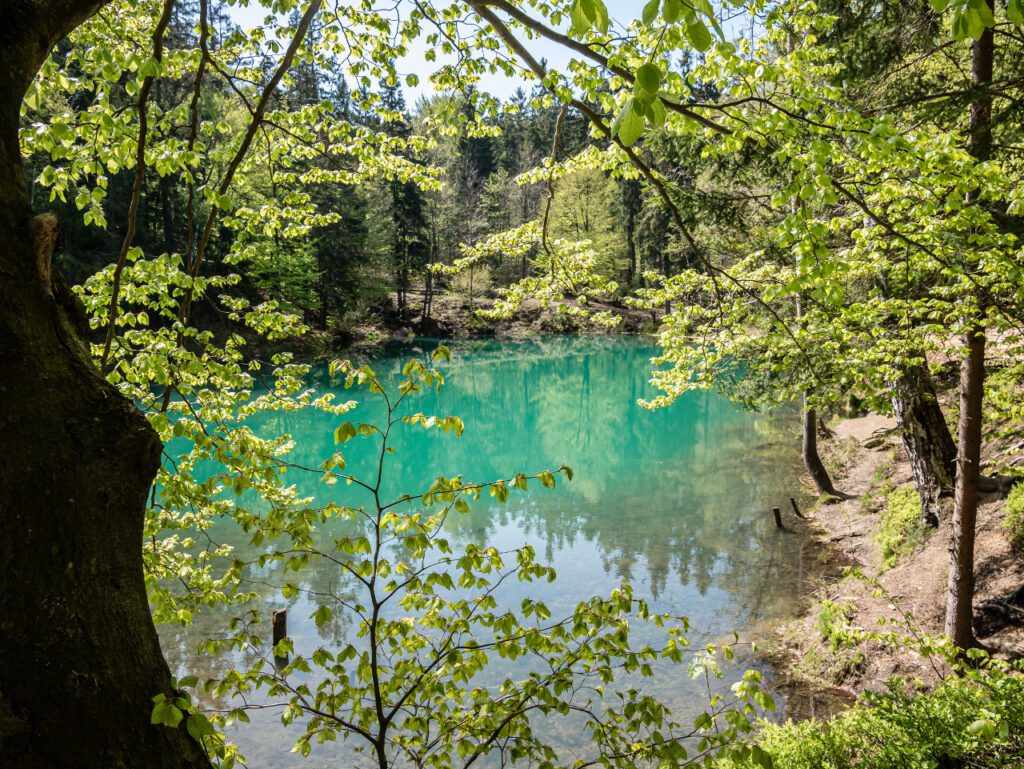

Miedzianka is a village developed thanks to mining many raw materials – including copper, cobalt, and uranium for 700 years. Due to the depletion of deposits and mining damage, the village began to be liquidated in the early 1970s.
Make sure to include in your plans a visit to the Colorful Lakes (Kolorowe Jeziorka) located near Marciszow railway station. The four colourful lakes – Yellow, Red, Blue and the rare Green – were created where a pyrite mine formerly operated. When it was closed, the flowing water began to be coloured by the substances carried away from the slopes and bottom of the pits.
Ząbkowice Śląskie is recognized throughout Poland for its Leaning Tower (Krzywa Wieża), which is deflected from the vertical by more than 2 meters. They also owe much of their popularity to their German name, Frankenstein, which may have inspired Mary Shelley to write a novel about Dr Victor Frankenstein.
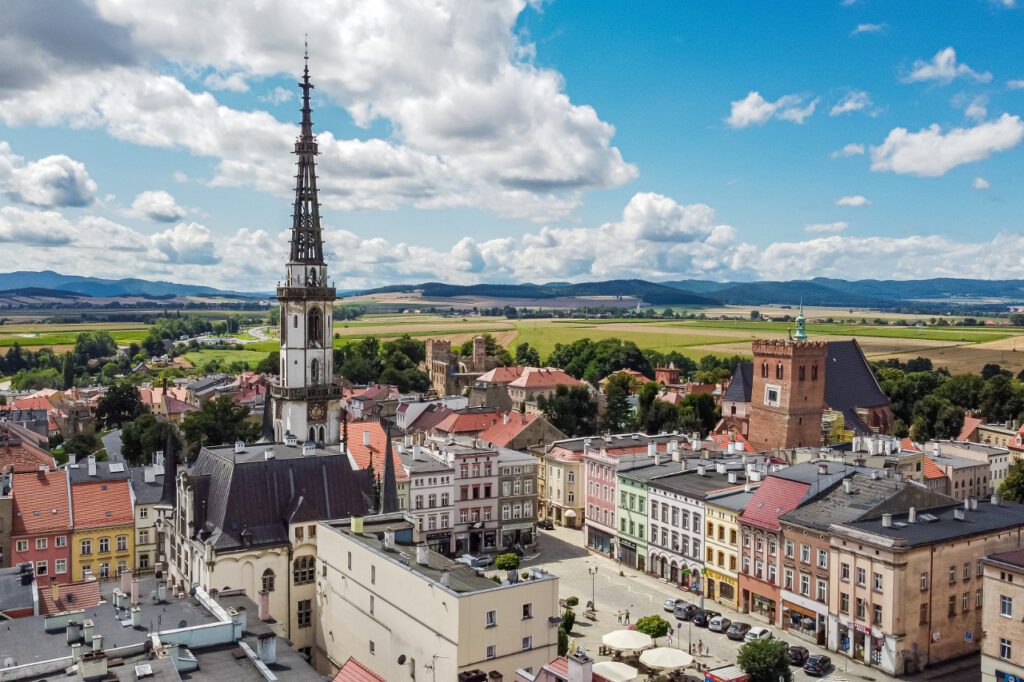
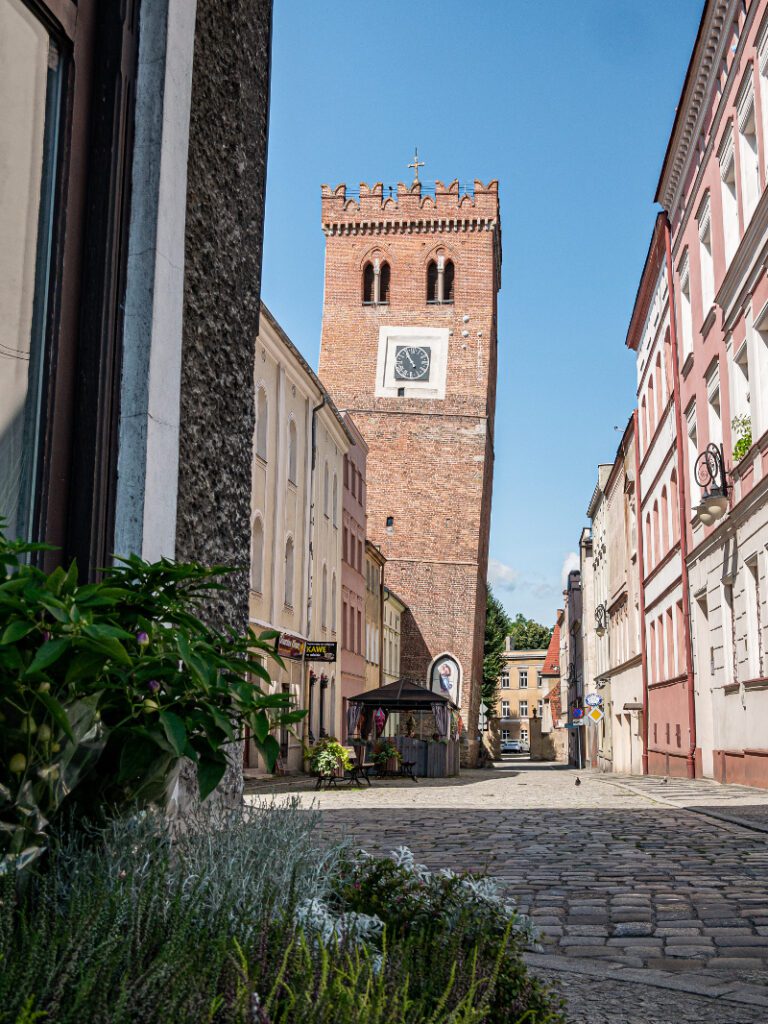

By the way, see also the city centre, which has retained its medieval layout – including sizable sections of the city walls. A strong point in the city’s landscape is the sixth incarnation of the Town Hall (Ratusz), whose tower at over 70 meters.
Ząbkowice Śląskie is one of the most charming small towns I have had the opportunity to visit in Lower Silesia. Allocate 5-6 hours for sightseeing, but it’s best to stay in Ząbkowice Śląskie for the whole weekend.
Located not far from Ząbkowice Śląskie, you will find Marianna Orańska Palace in Kamieniec Ząbkowicki. This is the summer residence of the Dutch royal, who is remembered as a great scandalmonger. At the beginning of the 19th century, there was much publicity about Marianne’s divorce caused by infidelity with the royal’s horse handler.
You can find the details of the tour of Marianna Orańska Palace on the website. You can buy tickets at the ticket office before entering the palace. You can also visit the park and mausoleum.
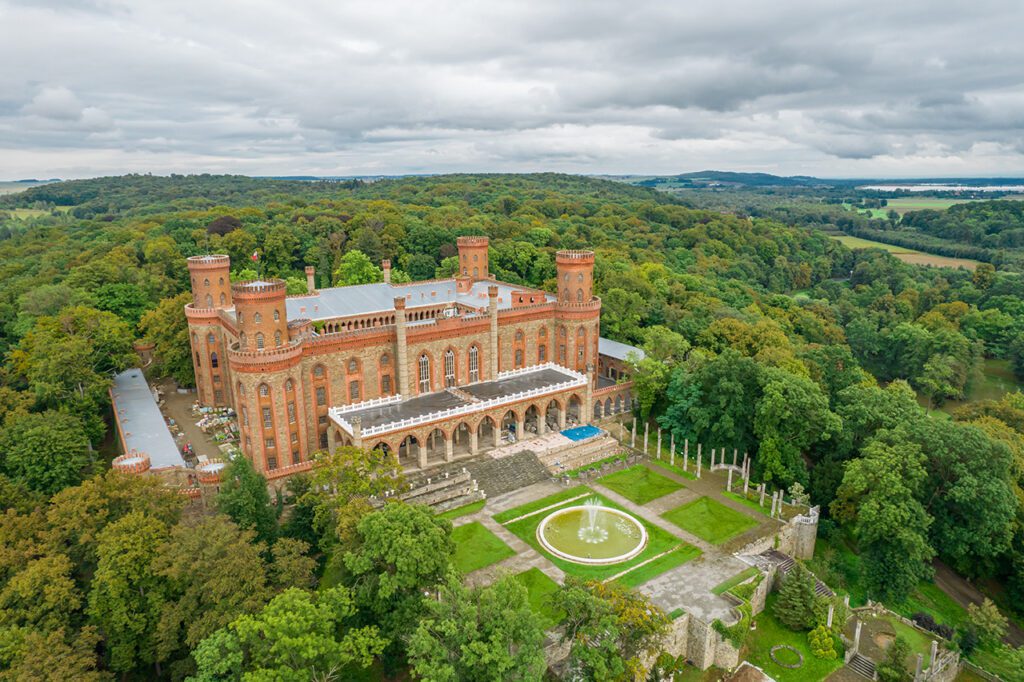
The massive building on the hill can be seen from a distance as it towers over the low-rise buildings of Kamieniec. The extensive Palace Park (Park Pałacowy), with several walking trails, is next to the palace. You need 1-2 hours to fully discover this attraction.
Kłodzko is located on the Nysa Kłodzka River in the southern part of Lower Silesia. Among tourists, it is a good base for trips to nearby spas – Polanica-Zdrój, Duszniki-Zdrój and Kudowa-Zdrój, but also as a destination.
Overlooking Kłodzko is the well-preserved Klodzko Fortress (Twierdza Kłodzko), a 16th-century system of fortifications protecting the city and region. You can explore the above-ground tourist route, consisting of 9 stops, and descend into the underground labyrinths.
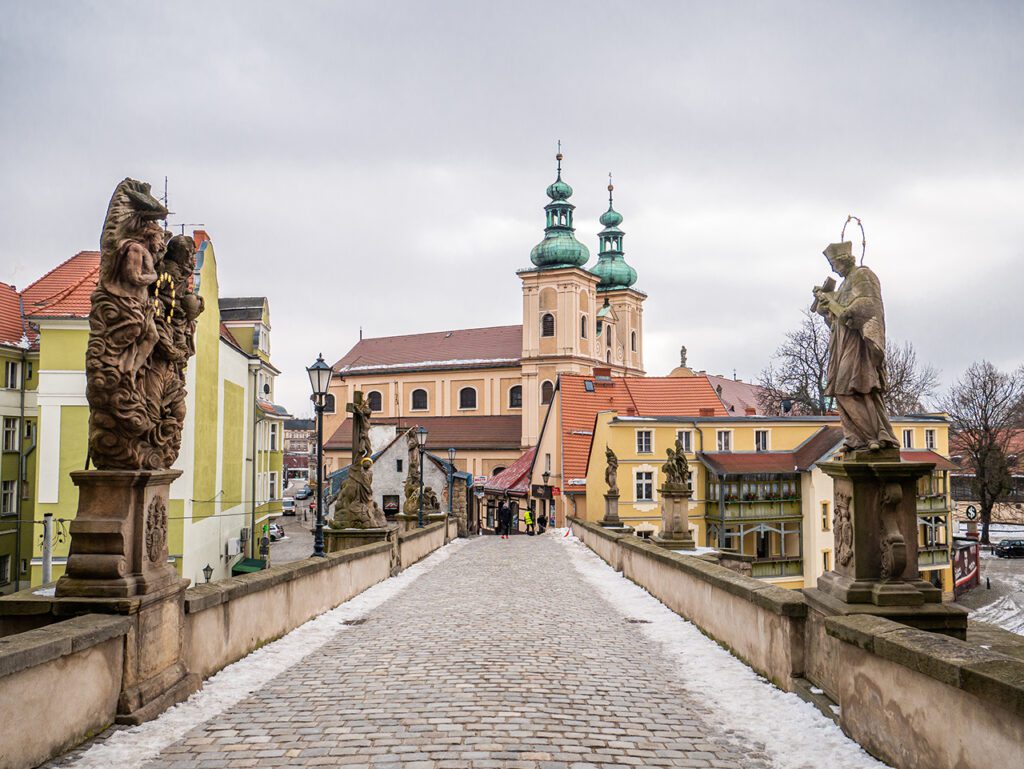
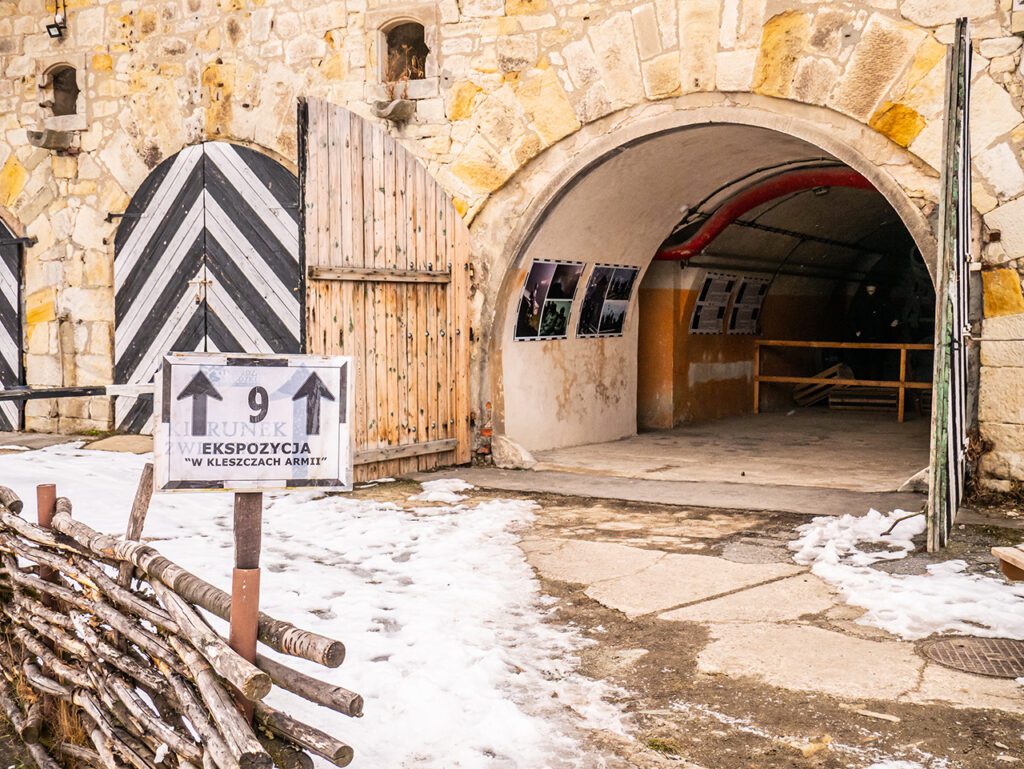
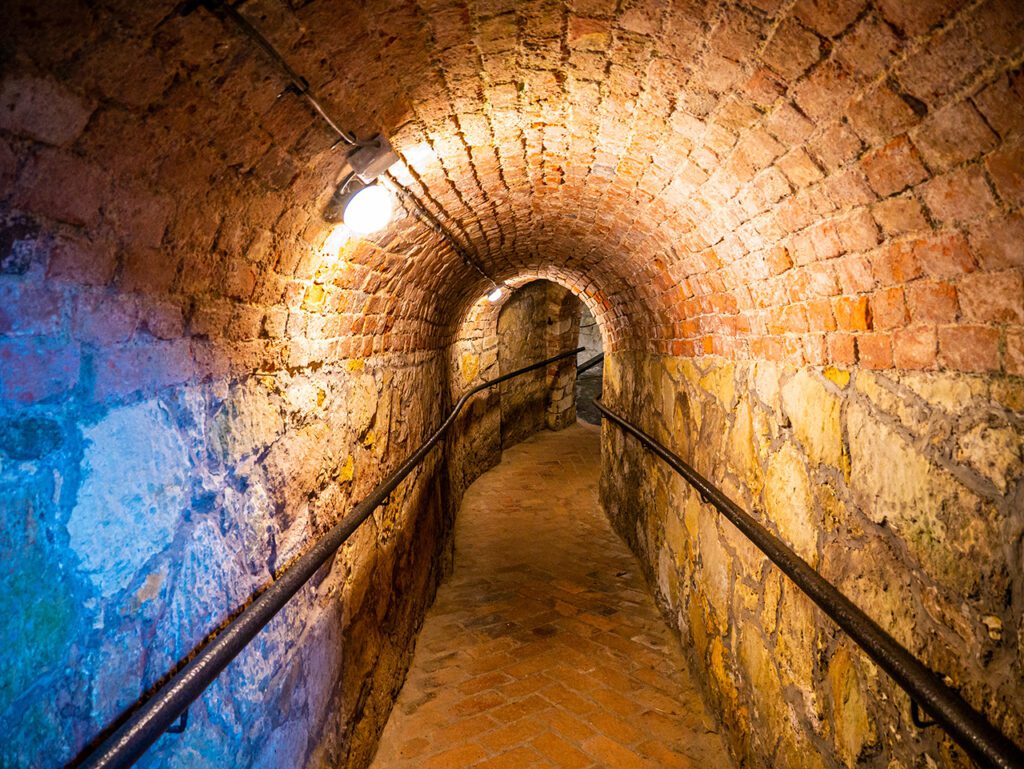
Klodzko also has a small but charming Baroque centre with the Town Hall (Ratusz) and St. John’s Bridge (Most św. Jana) – a smaller version of the Charles Bridge from Prague. The bridge was built in the late 14th century – over 600 years old! You can combine a visit to Klodzko with one of Klodzko’s spas and tours of the Table Mountains (Góry Stołowe).
You can choose from three spas – Polanica-Zdrój, Duszniki-Zdrój and Kudowa-Zdrój. You can reach each of them by train from Kłodzko and Wrocław. See all three Spa Parks (Park Zdrojowy) and drink healthy water in the Mineral Water Pump Rooms (Pijalnia Wód Mineralnych).
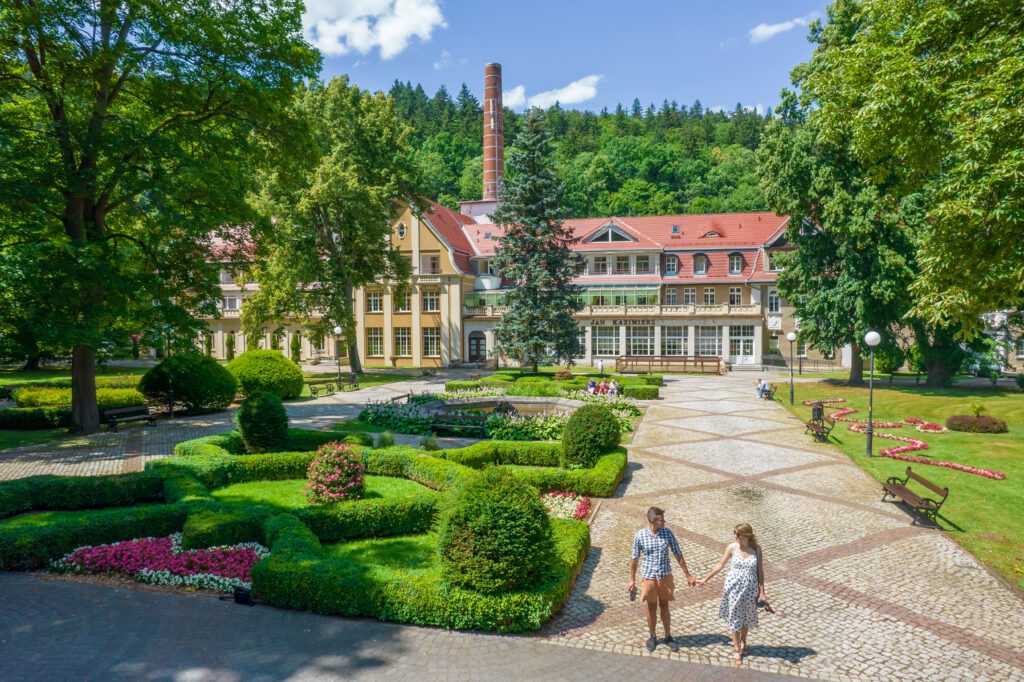
In addition to the Spa Parks, in Duszniki-Zdrój visit the Museum of Papermaking (Muzeum Papiernictwa) in a former paper mill, in Kudowa-Zdrój see the Skull Chapel (Kaplica Czaszek), and in Polanica-Zdrój climb the Góralka viewing platform (Punkt widokowy Góralka).
Looking for hotels & apartments in Kłodzko? Check available accommodation in Kłodzko (look for places close to the Kłodzko Fortress and the Market Square).
The Table Mountains (Góry Stołowe) are a unique mountain range in the Sudetes, on the border between Poland and the Czech Republic. They are so-called plate mountains – they have flattened tops and steep walls. The most visited by tourists are two nature reserves: Szczeliniec Wielki – the highest peak of the Table Mountains, and Błędne Skały – rock labyrinths right on the border with the Czech Republic.

The base for trekking to Szczeliniec Wielki is Karłów. A shelter and a beautiful view of the surroundings await at the top. You can reach the Błędne Skały from Karłów on foot (about 6 kilometres) or by car on the One Hundred Turns Road (Droga Stu Zakrętów) – about 8 kilometres.
The Błędne Skały is a complex of rocky, natural labyrinths you squeeze through during your tour. Table Mountain National Park (Park Narodowy Gór Stołowych) also features less popular corners like the Radkowskie Rocks (Radkowskie Skały) rock formations.
55 BEST HIKING ROUTES IN LOWER SILESIA (POLAND)
Don’t waste time planning a trip and enjoy your time in the mountains.
Get an ebook with 55 ready plans for trips to the mountains of Lower Silesia.
For one day and the entire weekend.
In this unique corner of Lower Silesia, you may find evidence of history dating back millions of years. Post-volcanic hills and remnants of ancient volcanic eruptions make this corner of Lower Silesia unparalleled in Poland.
The area of Kraina Wygasłych Wulkanów is full of post-volcanic ravines, fragments of ancient volcano chimneys and picturesque hills. You can look at it all from numerous observation towers. I also suggest hooking up with the well-preserved Grodziec Castle near Zlotoryja.

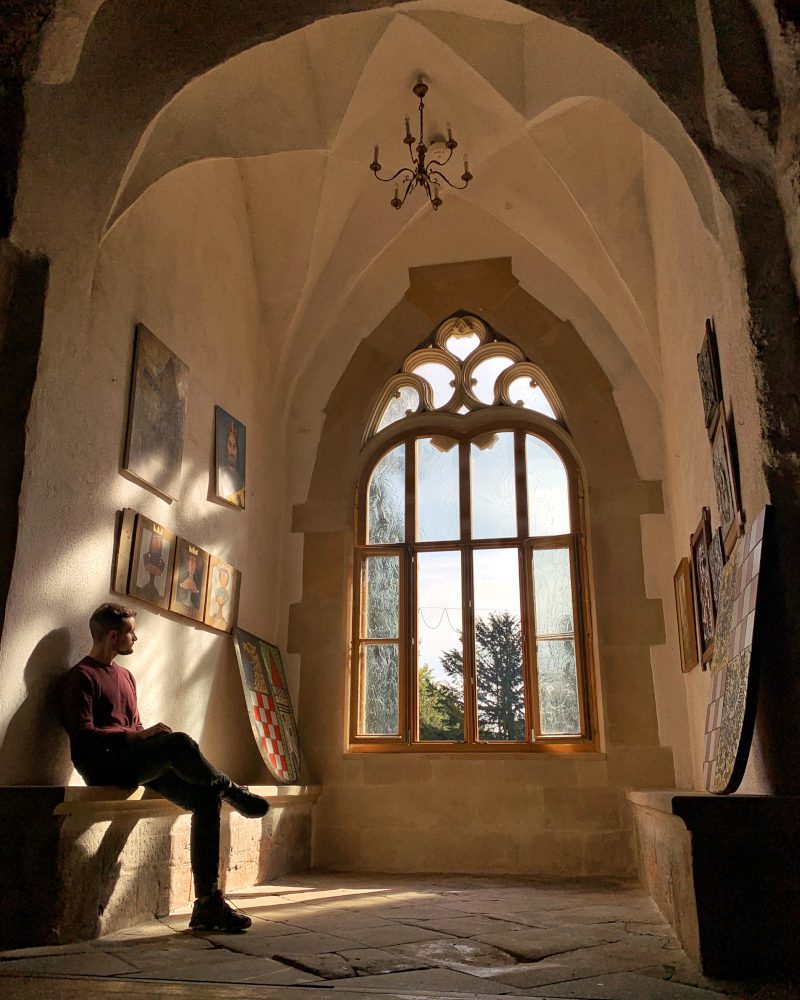
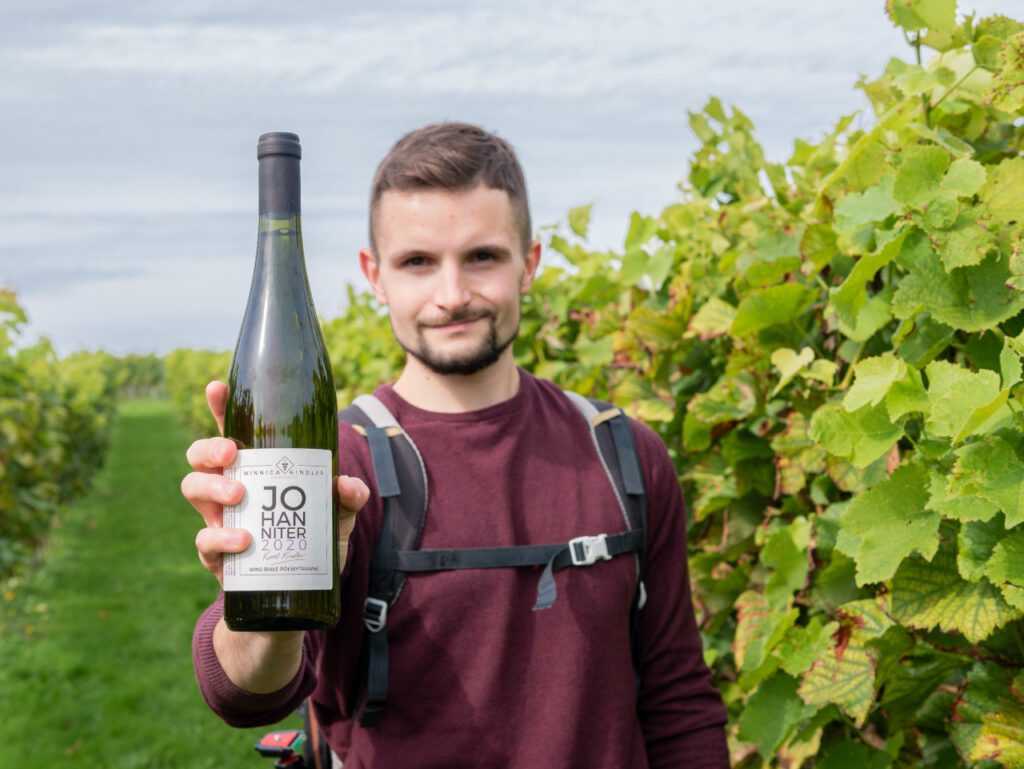
There are several vineyards in the area of the Land of Extinct Volcanoes (yes – Poland produces excellent wine!). In one of them (Winnica Agat), vines are grown on the slope of a former volcano. These are unique conditions and a climate not found in other parts of Poland.
You can go to Kindler Winery (Winnica Kindler) in Uniejowice or Agat Winery (Winnica Agat) in Sokolowsko for a wine tasting. You can stay overnight in the Winnica Agat and enjoy this unique atmosphere for longer.
Bolków Castle is a fortress located on Castle Hill, the biggest tourist attraction in the area. The castle hosts the Castle Party Festival every year, which attracts thousands of Gothic rock enthusiasts to the town.
Bolków Castle is featured, among others, in the movie “The Witcher”. Today, the castle houses the Bolków Castle Museum (Muzeum Zamkowe).
A characteristic feature is the 25-meter-high hunger tower (Wieża Głodowa) with a prow intended to help slip cannonballs fired toward the castle. The building contains a hunger dungeon, where Russians allegedly searched for hidden gold in Napoleonic times.
Ślęża is one of the most popular out-of-town destinations for Wrocław residents. The mountain is slightly over 700 meters above sea level, but its flat surroundings make it visible from miles around. Ślęża was a sacred mountain – pagan idols and the sun were worshipped here.
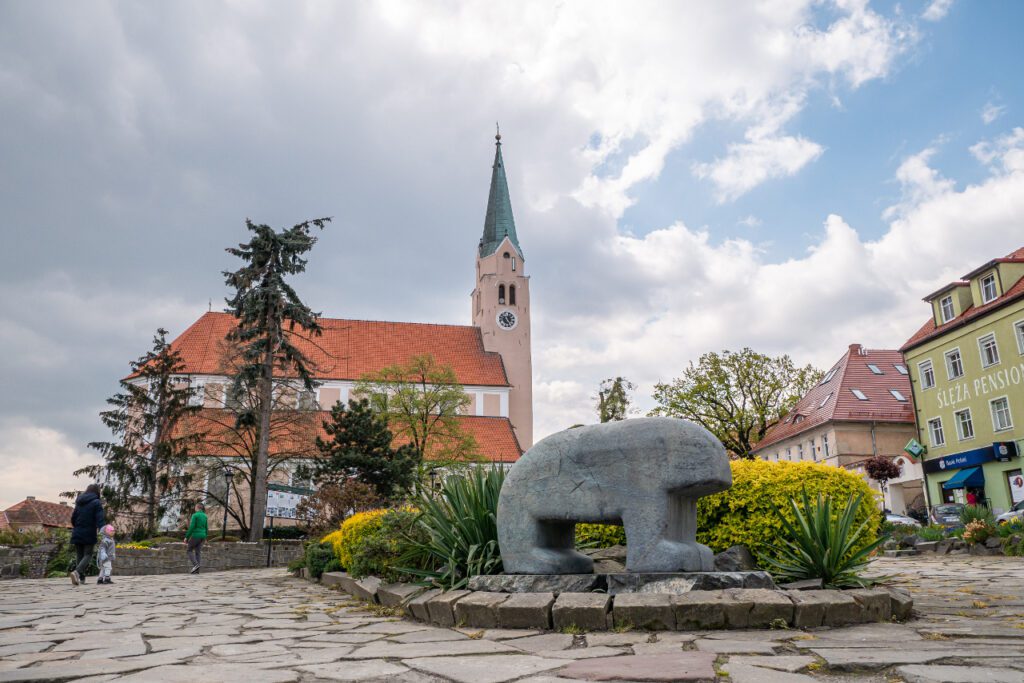
On the way to the summit, you’ll come across several stone carvings and obscure shapes that may have witnessed this worship. On warm days, crowds of tourists trek to Ślęża, as it is the closest mountain destination for Wrocław residents.
At the top of Ślęża, you’ll find an observation tower, the PTTK Tourist House (Dom Turysty) with its restaurant offerings and the Church of the Visitation of the Blessed Virgin Mary. It will take about 1.5-2 hours to get to the top from Sobótka.
The Owl Mountains (Góry Sowie) are a popular mountain range of Lower Silesia. I recommend you climb the highest peak – Great Owl (Wielka Sowa). You will find a 25-meter-high stone observation tower on it. You should also climb Kalenica and visit the beautiful Bystrzyckie Lake (Jezioro Bystrzyckie). There you will find a huge dam (zapora) and Grodno Castle.

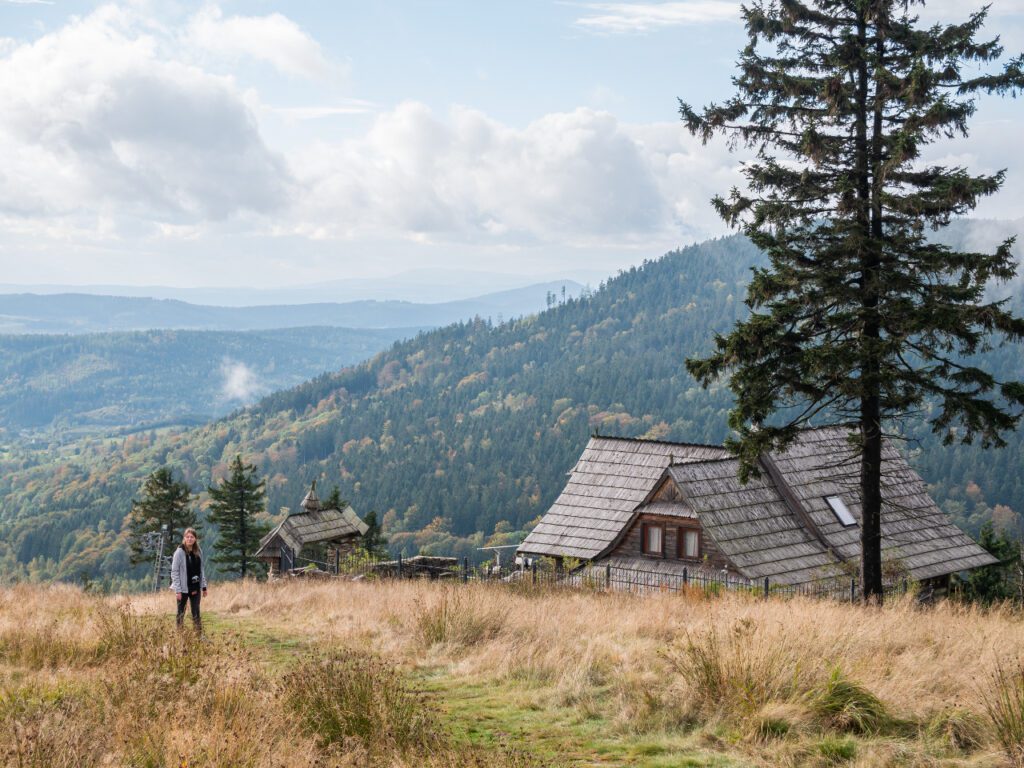
In the Owl Mountains, you will find traces of one of Lower Silesia’s greatest wartime mysteries. Project Riese is one of the most significant Nazi undertakings in the declining phase of World War II. The Owl Mountains were scattered with an intricate network of underground corridors, some of which remain a mystery.
The mysterious underground and the Riese complex hadn’t been completed by the war’s end. The underground was supposed to house military commands, the Reich Foreign Minister and even Hitler himself (probably at the Książ Castle).
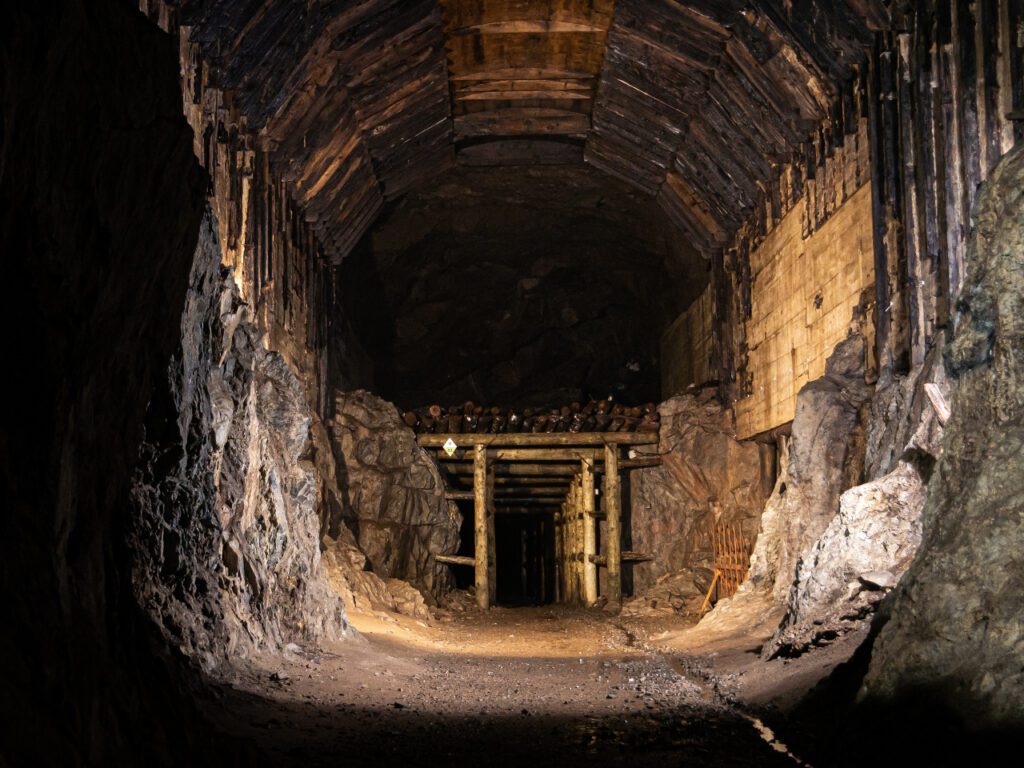
Today you can visit the underground corridors of the Riese complex, which were discovered in the post-war years:
Today’s museum in Nowa Ruda operates in a coal mine that began mining coal at the earliest of all the mines now within Poland’s borders. The Nowa Ruda coal mine was one of the most dangerous in Europe (as many as 187 miners died in a mine accident in 1941).
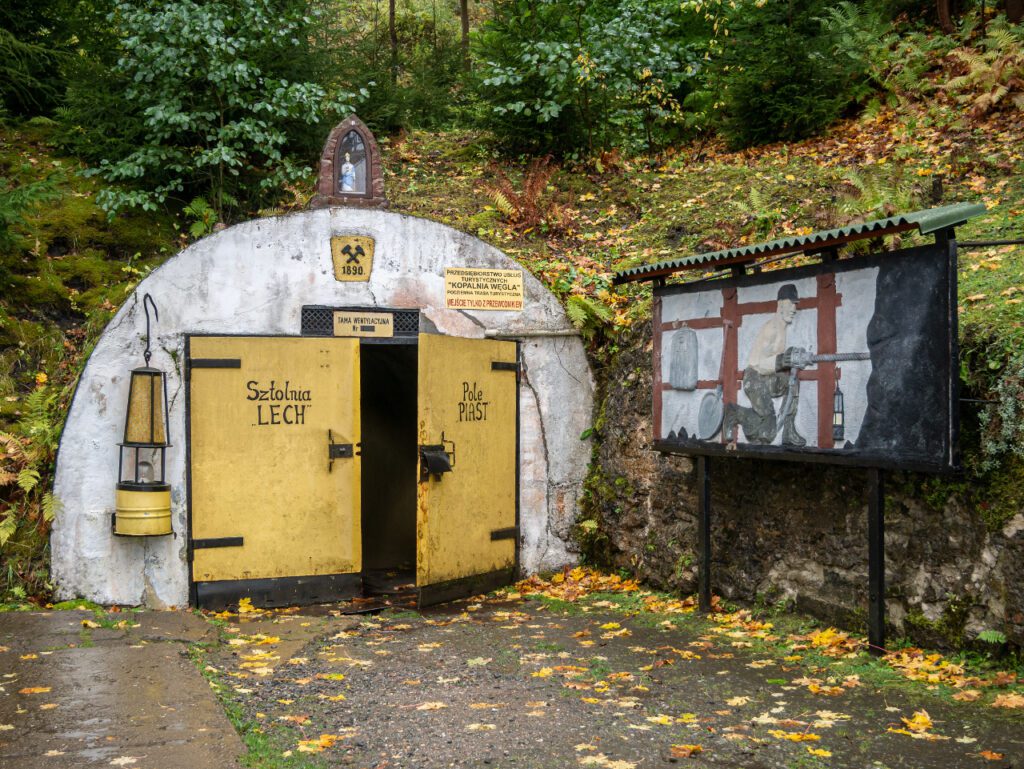
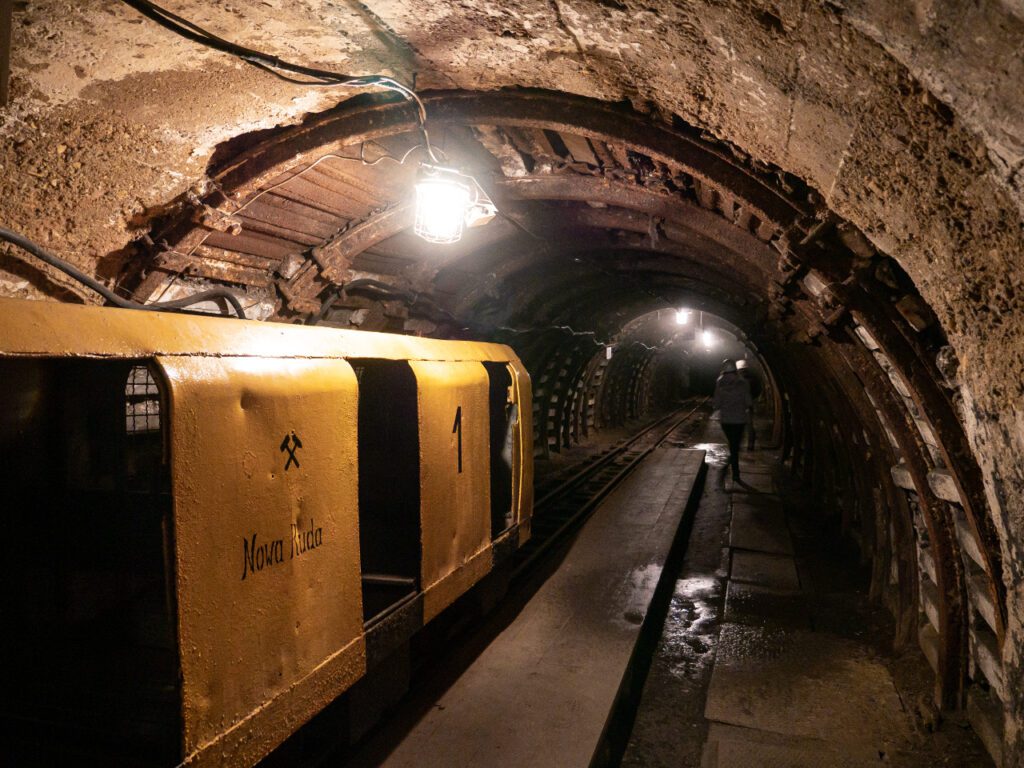
The mine ceased operation in 1995, in the wave of the liquidation of the Lower Silesian mining industry. Now a museum operates here, which allows you to enter the underground corridors and see the real working conditions of the miners. There is still real equipment used in the past in this mine underground.
While in Nowa Ruda, find some time to explore the Market Square and the lovely architecture of the city centre. You can also look at Nowa Ruda from the observation tower on St. Anne’s Mountain, which is only an hour’s hike from the centre.
Czocha Castle is one of the most recognizable Polish castles – mainly through its numerous appearances in movies and TV series, and one of Lower Silesia’s most exciting and intriguing castles. During World War II, a secret Abwehr cypher school may have operated here.
A network of underground corridors of unclear purpose was discovered in Czocha Castle. This raises associations for some tourists with Hogwarts Castle from the Harry Potter stories. There are also several hypotheses about the walled-off halls, which are still supposed to be full of valuables.
Get ready for travel to Poland & Lower Silesia
1. Accommodation: book early & save money (stay in Wrocław, Jelenia Góra & Szklarska Poręba).
2. Currency exchange: you can use your bank card, but much cheaper is the free Curve card.
3. Rent a car in Wrocław: you’ll be flexible & see more in less time.
4. Map of Dolny Śląsk’s sights: explore with a map of the best attractions on your phone.
The ARADO project is an underground attraction of Kamienna Góra, a city full of wartime secrets. The Germans located here a large number of design offices and secret factories that designed solutions for the wartime aerospace industry.
When the fate of the war began to tilt in favour of the Allies, some important plants – including those producing bearings – were moved to the underground of Kamienna Góra. One such secret plant was ARADO, which had been working on a new long-range aircraft since 1943.
The exact purpose of ARADO and the extensive network of underground corridors still need to be discovered, making the site extremely interesting for tourists. Visiting the ARADO Project, you may feel like an employee of Hitler’s secret laboratory.
The Śnieżnik Massif in the far south of Lower Silesia abounds in attractions and can be the destination of a several-day trip. In addition to the beautiful view from the summit, the Sudety’s longest cave – the Bear Cave (Jaskinia Niedźwiedzia), and the Kletno Uranium Mine await you in the area.
You can climb Snieznik by several routes – including the yellow trail from Kletno. The route is less than 10 km long and should take about 4 hours. The red path from Międzygórze is also a popular route.

From Kletno, you will also reach the Bear Cave, discovered in 1966 during blasting operations conducted in a stone mine. Exploration of the Bear Cave is ongoing – speleologists reach new parts of the cave yearly. Three levels have been discovered in the Bear Cave, and the total length of the passages is about 5 kilometres.
A kilometre from the Bear Cave, you will find another attraction: the Kletno Uranium Mine. It operated only a few years after World War II (from 1948 to 1953), but that was enough to mine about 20 tons of uranium there. The extracted uranium served the needs of the Soviet Union.
Numerous multicoloured minerals colour the walls of the adit. You don’t have to worry about high radiation levels – they are safe for humans. You must spend about 45 minutes exploring about 400 meters of underground galleries.
Right on the Polish-Czech border is the town of Złoty Stok, which is the oldest mining centre in Poland. Over 700 years of mining, Złoty Stok yielded 16 tons of pure gold. In the 16th century, as many as 190 gold mines operated there, with an average of 60 to 140 kilograms of gold extracted annually (8% of all gold mining in Europe).
The historic Gold Mine in Złoty Stok offers an unusual attraction – Poland’s only 10-meter-high underground waterfall. An underground tourist route operates in the Gold Mine. In addition to exploring on foot, you’ll take a boat ride through the flooded adit and go to the surface by railroad.
The list of Lower Silesia’s most exciting attractions is open, as it is one of Poland’s richest tourist provinces. Give Lower Silesia a chance and plan your trips to see as many attractions as possible from my list. May Lower Silesia make as good an impression on you as it has made on me over the years. Have a successful tour!
BEST PLACES TO SEE IN LOWER SILESIA ON YOUR PHONE
Looking for exciting places to see in Lower Silesia? Want to save time on planning?
Get a map of 110 attractions in Lower Silesia. Works on your phone & computer (Google Maps).
Welcome to my travel blog!

Hi! I’m Bartek Dziwak – traveller & travel blogger with 10 years of travel experience.
Feel free to use a tons of information from this blog to make your travel better.
Practical Tips
Book your stay: check out hotels and hostels in a good location and book your stay before others take your place.
Exchange money cheaper: order a free Curve card to exchange money cheaper than in an exchange office and get £10 as a gift
Check My Travel Shop: check ready-made hiking routes and city attractions maps that will make your sightseeing easier.
Is my article helpful?
Help me keep making these travel articles for you by supporting me with a cup of coffee.
Check My Ebooks
Polish Mountains - MAP of Mountain Ranges & Peaks & Accommodation
BIAŁOWIEŻA NATIONAL PARK – MAP of 50+ Best Places to See
MAZURY & WARMIA (LAKES DISTRICT) – MAP of 200+ Best Places to See
Mountains of Lower Silesia (Poland) - 55 Best Hiking Routes
Prepare to Travel Abroad – Practical Tips
Exchange money cheaper: order a free Curve card to exchange money cheaper than in an exchange office and get £10 as a gift.
Book accommodation that suits you: check out hotels, hostels & apartments in a good location and book your stay before others take it.
Check My Travel Shop: check my ebooks with maps of cities & regions attractions and ready-made hiking routes that will make your sightseeing easier.
Is my article helpful to you? Help me keep making these travel articles for you by supporting me with a cup of coffee. I really love Aeropress!

Hi from the author! I’m Bartek Dziwak – traveller and founder of BartekOnTheGo.com travel blog.
I inspire people to travel around the world on their own and discover both famous and unusual places.
Check My Ebooks
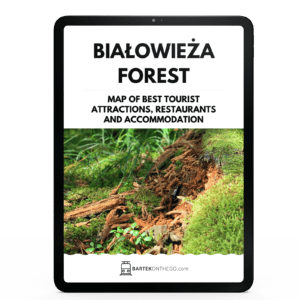
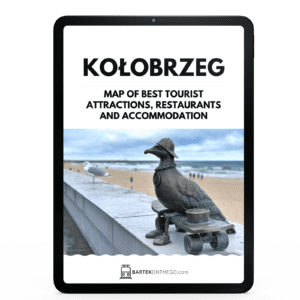


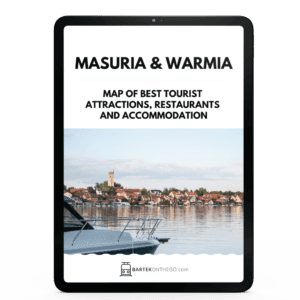


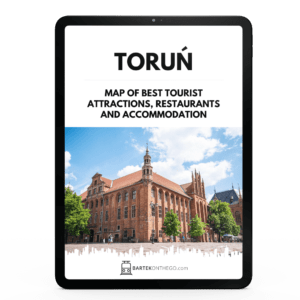
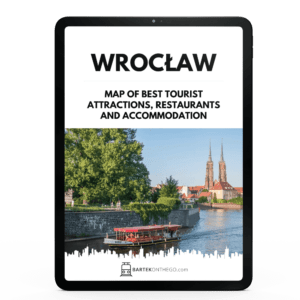
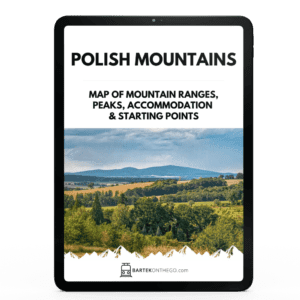
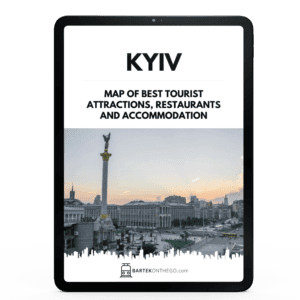

| Cookie | Duration | Description |
|---|---|---|
| cookielawinfo-checkbox-analytics | 11 months | This cookie is set by GDPR Cookie Consent plugin. The cookie is used to store the user consent for the cookies in the category "Analytics". |
| cookielawinfo-checkbox-functional | 11 months | The cookie is set by GDPR cookie consent to record the user consent for the cookies in the category "Functional". |
| cookielawinfo-checkbox-necessary | 11 months | This cookie is set by GDPR Cookie Consent plugin. The cookies is used to store the user consent for the cookies in the category "Necessary". |
| cookielawinfo-checkbox-others | 11 months | This cookie is set by GDPR Cookie Consent plugin. The cookie is used to store the user consent for the cookies in the category "Other. |
| cookielawinfo-checkbox-performance | 11 months | This cookie is set by GDPR Cookie Consent plugin. The cookie is used to store the user consent for the cookies in the category "Performance". |
| viewed_cookie_policy | 11 months | The cookie is set by the GDPR Cookie Consent plugin and is used to store whether or not user has consented to the use of cookies. It does not store any personal data. |